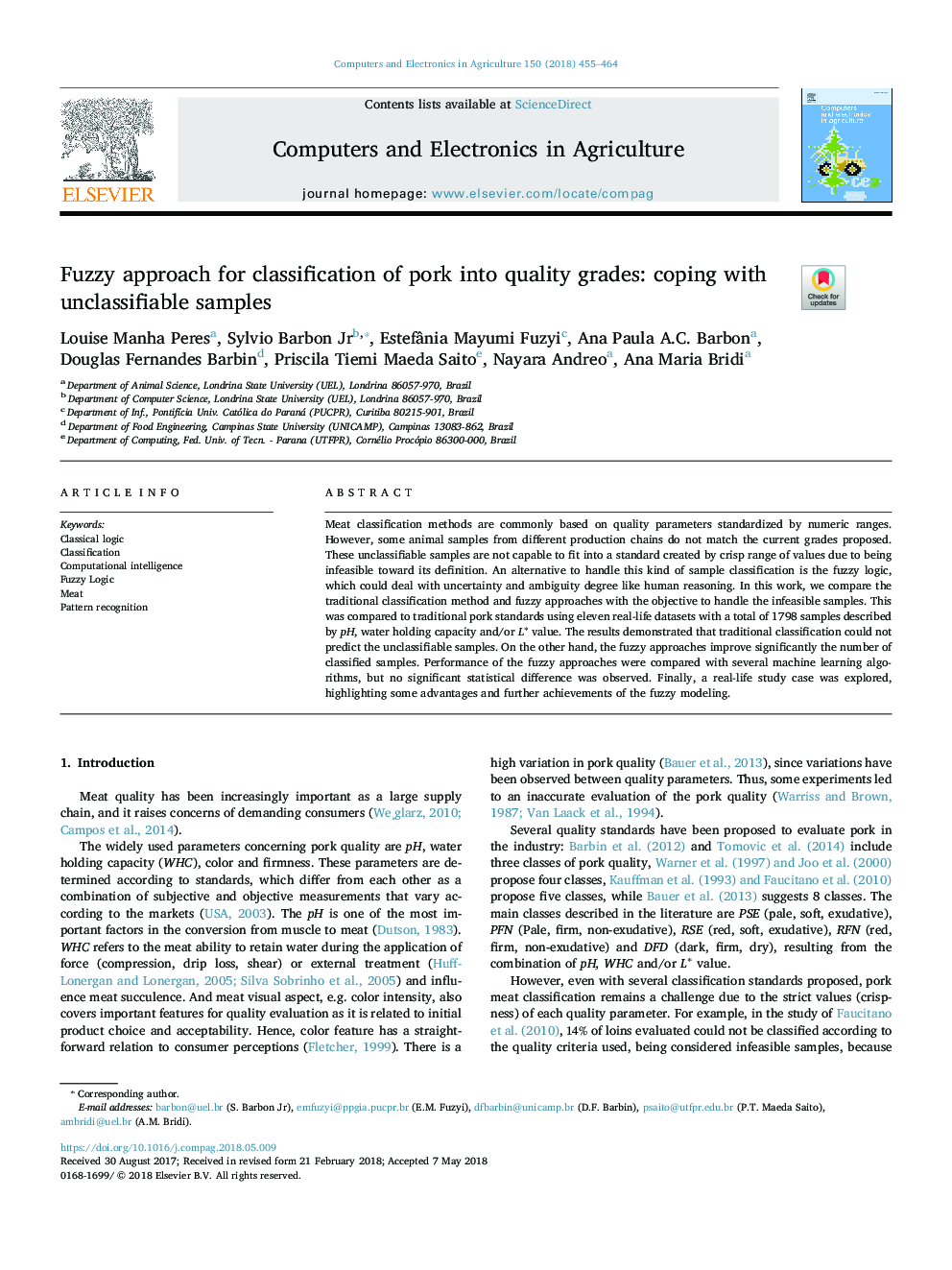| Article ID | Journal | Published Year | Pages | File Type |
|---|---|---|---|---|
| 6539431 | Computers and Electronics in Agriculture | 2018 | 10 Pages |
Abstract
Meat classification methods are commonly based on quality parameters standardized by numeric ranges. However, some animal samples from different production chains do not match the current grades proposed. These unclassifiable samples are not capable to fit into a standard created by crisp range of values due to being infeasible toward its definition. An alternative to handle this kind of sample classification is the fuzzy logic, which could deal with uncertainty and ambiguity degree like human reasoning. In this work, we compare the traditional classification method and fuzzy approaches with the objective to handle the infeasible samples. This was compared to traditional pork standards using eleven real-life datasets with a total of 1798 samples described by pH, water holding capacity and/or Lâ value. The results demonstrated that traditional classification could not predict the unclassifiable samples. On the other hand, the fuzzy approaches improve significantly the number of classified samples. Performance of the fuzzy approaches were compared with several machine learning algorithms, but no significant statistical difference was observed. Finally, a real-life study case was explored, highlighting some advantages and further achievements of the fuzzy modeling.
Related Topics
Physical Sciences and Engineering
Computer Science
Computer Science Applications
Authors
Louise Manha Peres, Sylvio Barbon Jr, Estefânia Mayumi Fuzyi, Ana Paula A.C. Barbon, Douglas Fernandes Barbin, Priscila Tiemi Maeda Saito, Nayara Andreo, Ana Maria Bridi,
